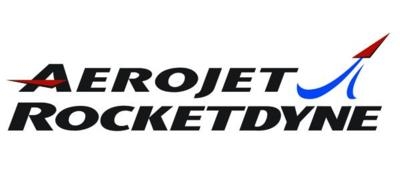Mon, Mar 02, 2015
To Be Developed For Rocket And Missile Propulsion, Other Applications
Aerojet Rocketdyne has been awarded a contract to research and develop environmentally sustainable monopropellants and gas generators for rocket and missile propulsion and Divert Attitude Control Systems.

The company is working with the U.S. Army Aviation and Missile Research, Development and Engineering Center; the U.S. Air Force Research Laboratory at Edwards Air Force Base; and the U.S. Army Medical Command to develop a new family of high-performing liquid propellants. The effort is funded through the Strategic Environmental Research and Development Program, an office of the Department of Defense.
Under the three-year contract, Aerojet Rocketdyne's Redmond, Washington team will lead the effort to conduct small-scale testing of potential monopropellant candidates in the laboratory, scaling up likely candidates in the Sacramento Chemical Synthesis Laboratory, then performing subscale thruster testing to select the most promising ones for future research. Parallel efforts will ensure that these compositions are safe to handle and leave a minimal environmental footprint.
"Aerojet Rocketdyne has decades of experience researching next-generation propellants for space and defense applications. That research has covered many different types of technologies and resulted in maturing propellant and propulsion system technologies from early lab research and development to fielding flight systems," said Julie Van Kleeck, vice president of Space Advanced Programs at Aerojet Rocketdyne. "We are excited to capitalize on our past accomplishments and are looking forward to helping develop the next generation of advanced green propellants - enhancing the capabilities of future systems while making the world we work in safer."
As part of its work with next-generation propellants, Aerojet Rocketdyne recently finalized flight designs for propulsion systems that use the Air Force-developed propellant AF-M315E, which will fly on the NASA Green Propellant Infusion Mission program in 2016. The green propellants developed through this new contract would provide options for future spiral upgrades to the technology being flown next year.
More News
Light Gun A handheld directional light signaling device which emits a brilliant narrow beam of white, green, or red light as selected by the tower controller. The color and type of>[...]
"The journey to this achievement started nearly a decade ago when a freshly commissioned Gentry, driven by a fascination with new technologies and a desire to contribute significan>[...]
Aero Linx: JAARS, Inc. For decades now, we’ve landed planes on narrow rivers and towering mountains. We’ve outfitted boats and vehicles to reach villages that rarely se>[...]
"Our driven and innovative team of military and civilian Airmen delivers combat power daily, ensuring our nation is ready today and tomorrow." Source: General Duke Richardson, AFMC>[...]
Aircraft Conflict Predicted conflict, within EDST of two aircraft, or between aircraft and airspace. A Red alert is used for conflicts when the predicted minimum separation is 5 na>[...]
 ANN's Daily Aero-Term (04.20.24): Light Gun
ANN's Daily Aero-Term (04.20.24): Light Gun Aero-News: Quote of the Day (04.20.24)
Aero-News: Quote of the Day (04.20.24) ANN's Daily Aero-Linx (04.21.24)
ANN's Daily Aero-Linx (04.21.24) Aero-News: Quote of the Day (04.21.24)
Aero-News: Quote of the Day (04.21.24) ANN's Daily Aero-Term (04.21.24): Aircraft Conflict
ANN's Daily Aero-Term (04.21.24): Aircraft Conflict



